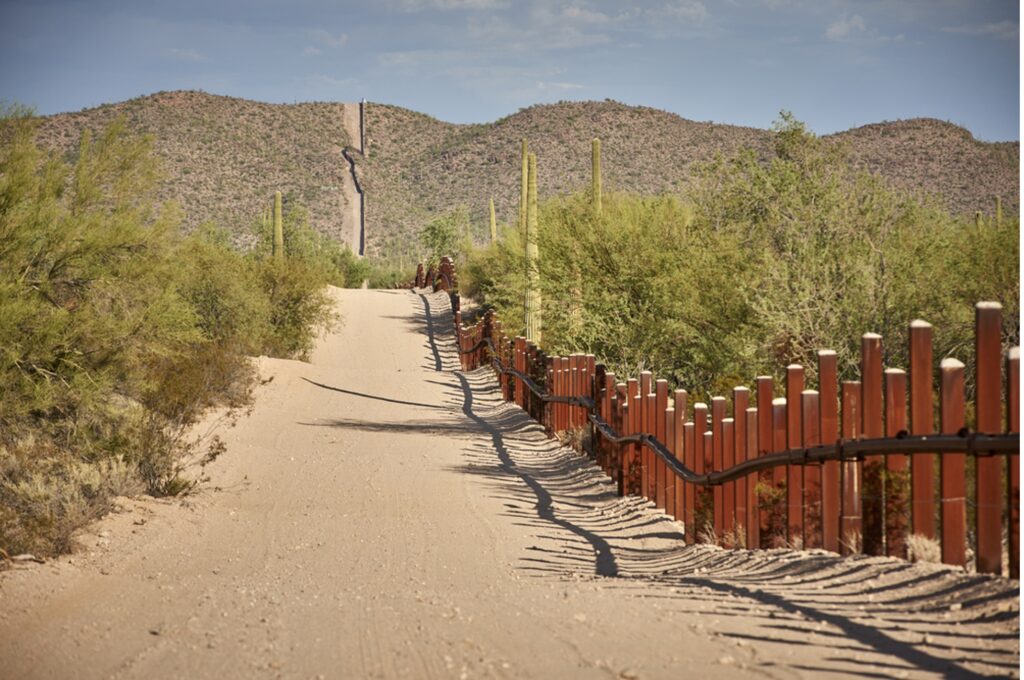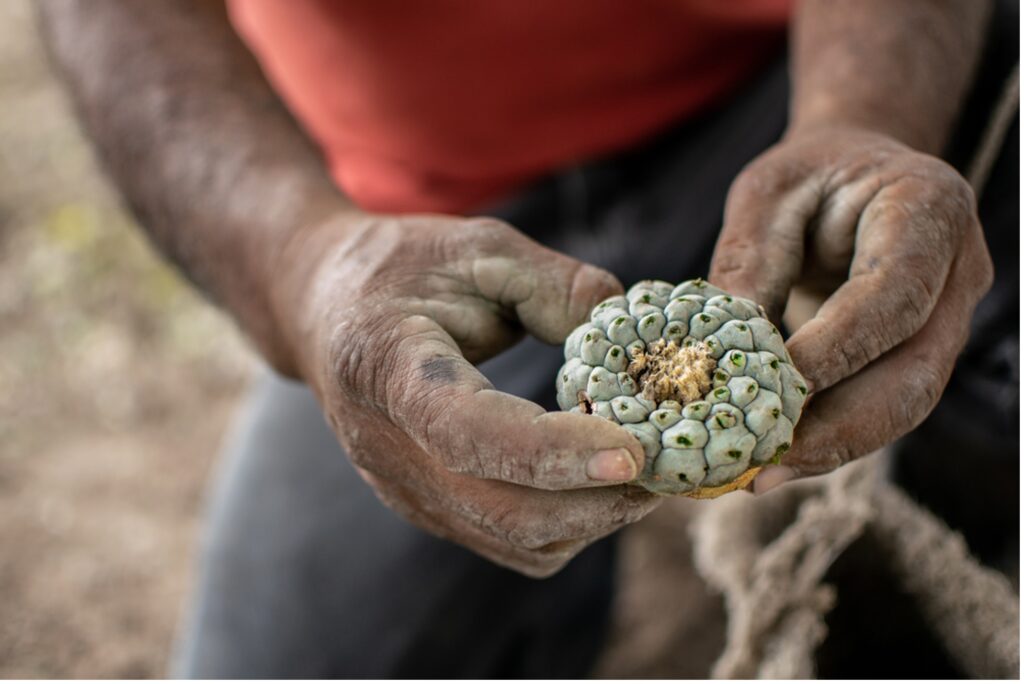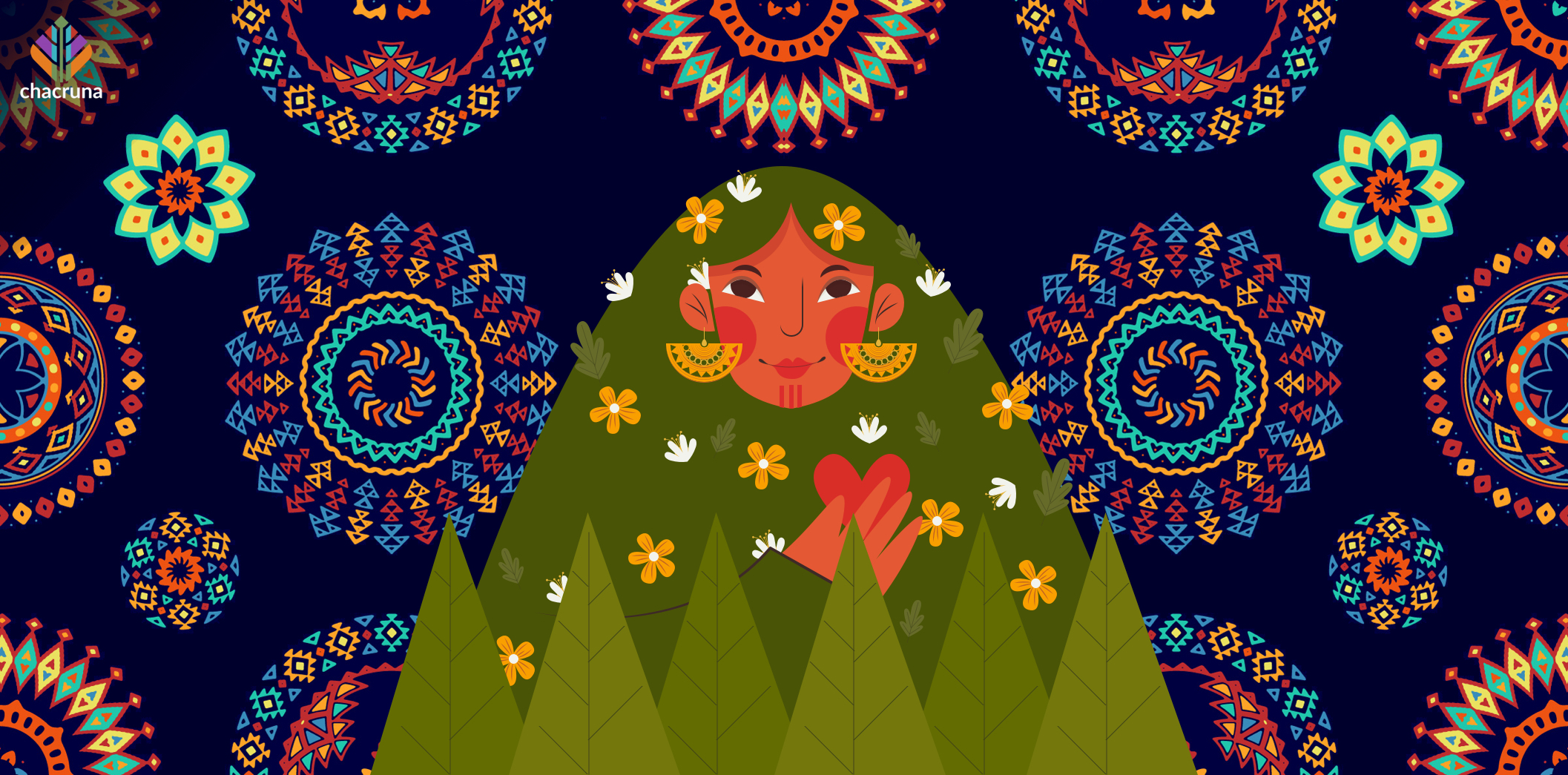- Mestizo Identity and Decolonial Psychedelic Futures - July 30, 2021
Working with sacred plant medicines can be a powerful aid on the path to healing from the ongoing violence of coloniality. In our healing journeys, how can we avoid reproducing colonial harm?
For people of the global majority impacted by colonization—Black, brown, and Indigenous people—navigating identity can be complex and fraught. We are multifaceted and nuanced beings, often existing at multiple intersections of oppression and privilege. We move through a world where “settler colonialism is epistemic, ontological, and cosmological… [with] violence that is reasserted daily” (Tuck & Yang, 2012). Working with sacred plant medicines can be a powerful aid on the path to healing from the ongoing violence of coloniality. In our healing journeys, how can we avoid reproducing colonial harm?

The Colonial Roots of Mestizaje
I come to this conversation as a third-generation Mexican-American. On my paternal side, I’m descended from white settlers from the British Isles; my maternal side are mestizo Mexican. My maternal grandfather was phenotypically Indio, with black hair, brown skin, and dark eyes; my grandmother was a light-skinned mestiza who was raised to be proud of the advantage bestowed by her Spanish heritage. Growing up with white proximity and class privilege, I had access to education and resources, but not to my cultural origins.
The creation of mestizaje in Mexico as a tool of nationalism succeeded in maintaining an underclass of Indigenous and African-descended people while upholding white supremacy and denying the existence of racism. Mestizaje has roots in the white supremacist caste system of colonial Spain, brought to the country by force, along with 200,000 stolen and enslaved Africans. Between the sixteenth and nineteenth centuries, this hierarchical caste system privileged the white Spanish, with mestizo descendants of mixed Indigenous and Spanish heritage below them in status and Indigenous and African-descended people at the bottom. When Mexico won independence from Spain in 1848, the national race was declared to be mestizo, reinforcing the disenfranchisement of Indigenous and African-descended Mexicans. Through the hierarchical structure of white supremacy, mestizos have been weaponized against Black and Indigenous people in striving for whiteness. This legacy is the inheritance of mestizos on both sides of the border.

Recordings are now available to watch here
Mestizo Identity Politics
For descendants of colonized people, the impacts of generational trauma play out in numerous ways and are very much alive today.
Mexican Americans are a diverse population with widely different experiences, yet we carry kernels of shared histories. At the time of Spanish conquest in the early sixteenth century, there were 25 million Indigenous people in Mexico; by the nineteenth century, there were 1.5 million. Survivors of genocide and their descendants faced persistent violence, including slavery and lynching, into the twentieth century in the so-called southwestern United States. For descendants of colonized people, the impacts of generational trauma play out in numerous ways and are very much alive today. Contemporary Mexican-Americans experience many forms of racism, including state violence, criminalization, discrimination, educational and income gaps, and health disparities.
Yet, these lived experiences, bearing the epigenetic imprints of historical trauma, are distinct from experiences of Indigeneity. As a cultural and political identity, Indigeneity is determined by “who claims you,” with tribes establishing their own cultural norms for determining membership (Tallbear, 2013). Indigenous identity is political, as tribal nations are not merely ethnic identities but sovereign political entities. Tribal sovereignty exists whether treaties are honored or not, and Indigenous sovereignty exists whether it is acknowledged or not. Tokenization, cultural appropriation, and settler nativism are endemic in the late stage of five hundred years of colonialism. While reconnection with Indigenous lineage is a careful process of relationship building and can be necessary work in undoing colonial erasure for Indigenous descendants, the practice of nativism—claiming political Indigeneity based on ancestry—can be an attempt to circumvent one’s privilege and may cause harm to present-day Indigenous communities.
The persistent dangers of coloniality affecting Indigenous people globally are real, and for non-Natives who seek to be allies, solidarity with their movements is essential.

The prevalence of false claims to Indigeneity in academia, politics, in spiritual and psychedelic spaces, and other realms is an ongoing controversy against which some Indigenous activists have taken bold stands. Non-Natives taking up space meant for Indigenous voices can usurp and undermine sovereignty. Indigenous Mexican activist Jessica B. Hernandez (Zacateca) speaks out against Chicano claims to Indigeneity: “When it is time for Indigenous peoples to talk or speak, remove yourself from that discourse or conversation. Acknowledge the tribes and Indigenous communities that still exist.” Hernandez asks Chicanos to instead use our privilege to help dismantle the ongoing harm and violence faced by Indigenous peoples. Throughout Abya Yala (an Indigenous term referring to the Americas), Indigenous people experience profound discrimination, poverty, sexual violence, and murder. Native environmental defenders are threatened with harassment, arrest, and violence. Two-thirds of the 212 murders of Indigenous environmental activists that occurred in 2019 were in Latin American countries. Here in the U.S., Indigenous women are murdered at a rate ten times the national average, with homicide as a leading cause of death for Indigenous women, girls, and Two-Spirit individuals. The persistent dangers of coloniality affecting Indigenous people globally are real, and for non-Natives who seek to be allies, solidarity with their movements is essential.
Reproducing Coloniality
Colonial conquest was organized around two axes of power: the racial hierarchy between the conquered and the conquerors, and the exploitation of resources and labor for capital. These axes laid the foundation for the construction of race and capitalism, and the ensuing colonial matrix of power (CMP). Latin American decolonial theorist Walter Mignolo likens the CMP to the Matrix, from the eponymous film: an invisible, all-pervasive constructed reality. There is no outside position from which to observe, until the protagonist, gaining awareness of the matrix, chooses to disengage.
Discover the Indigenous Reciprocity Initiative of the Americas
The destructive, devouring force of the colonial matrix has many names in different cultures. Jack Forbes (Powhatan-Renapé, Lenape), in his book Columbus and Other Cannibals (2008), writes that agents of colonialism are wetiko, an Ojibwe word:
which refers to a cannibal or, more specifically, to an evil person or spirit who terrorizes other creatures by means of terrible evil acts, including cannibalism… cannibalism, as I define it, is the consuming of another’s life force for one’s own purpose or for profit. (p. 25)
Eduardo Duran (Apache, Tewa, Lakota) (2019) calls this consumption the bite of the vampire: “when they bite a victim, the victim becomes infected and also will become a vampire.” Atekpatzin Young (Apache, Tewa) (2020) calls the cannibal disease gringismo and defines it as “a genocidal, patriarchal, Christian, colonialist, capitalistic, white-supremacist epistemology and hegemony.”
There is not a soul alive today who has not been infected by the colonial sickness, and a praxis of disengagement from the matrix is the remedy.
People infected with the colonial sickness exhibit symptoms of gringismo, including people of color who have internalized oppression. The characteristics of gringismo are so endemic to the Western worldview they are as difficult to perceive as the matrix itself, and get perpetuated through the actions of even well-intended individuals, movements, and organizations. Some characteristics of gringismo include paternalism, defensiveness, individualism, power hoarding, the belief that there is only one correct way, defining progress as growth and expansion, all or nothing thinking, and a sense of urgency (Okun, 2021). There is not a soul alive today who has not been infected by the colonial sickness, and a praxis of disengagement from the matrix is the remedy.

Toward Decolonial Psychedelic Futures?
Mainstream psychedelic culture broadly considers itself to be a free-thinking space that prizes cognitive liberty. Yet, it too is situated within the global set and setting of the colonial matrix of power. It is clear that, despite the mind-manifesting qualities of psychedelics, their use alone does not automatically result in behaviors aligned with social justice. Even people engaging respectfully with sacred plants, cacti, and fungi might still think of them as objects to consume, rather than as sacraments or as beings with agency and rights of their own.
Too often, there is disregard for the knowledge of people who have cultivated relationships with these sacred plants for thousands of years. Mainstream attitudes about popular entheogens such as psilocybin are colonially informed, such that, “with a neoliberal lens, developments with psilocybin are considered significant advances involving ethnopharmacology, chemistry, psychopharmacology, toxicology, psychology, and psychiatry,” whereas, “from an Indigenous perspective, psilocybin research and drug development tells a story of extraction, cultural appropriation, bioprospecting, and colonization” (Gerber et al., 2021; see also, Negrin, 2020).
A similar lens can be applied to the debate over peyote, an Indigenous sacrament that has become endangered due to habitat destruction and overharvesting. Respect for Indigenous sovereignty includes the implementation of free, prior, and informed consent for Indigenous communities to select their own representation and make decisions affecting their land and cultural traditions. Indigenous holders of traditional ecological knowledge (TEK) have thousands of years of empirical wisdom and are experts in environmental management. Although they comprise only 5% of the global population, Indigenous people currently manage up to a quarter of the Earth’s surface and protect 80% of the planet’s biodiversity. Indigenous-led movements for conservation grounded in TEK are effective for restoring ecosystems as well as relationships between the land, people, and more-than-human beings.
Following Indigenous leadership in protecting sacred plants is a practical approach to the ailments generated by the colonial matrix of power. Can we humble ourselves and listen?
Please donate to the Psychedelic Renaissance Documentary
There is not a singular journey to decoloniality, which is not a destination or final endpoint but an unfolding process. Similarly, Indigenous solidarity is not formulaic; it is place-based, relational, and unique to the situation. How can we individually and collectively engage in decolonial praxis? At Chacruna’s Sacred Plants of the Americas II conference, several Indigenous speakers communicated concern about commodification of entheogens and called for the de-escalation of consumption of endangered sacred plants. Indigenous leaders have generously offered suggestions about how to be an ally to Indigenous people. Following Indigenous leadership in protecting sacred plants is a practical approach to the ailments generated by the colonial matrix of power. Can we humble ourselves and listen?
Art by Luana Lourenço.
Coalition to Stop Violence Against Native Women. (2020). #MMIWG2S: Missing and murdered Indigenous womxn, girls, and two spirit. https://www.csvanw.org/mmiw
Duran, E. (2019). Soul wound: Trauma-informed counseling for Indigenous communities. New York City, NY: Teachers College.
Forbes, J. D., & Jensen, D. (2008). Columbus and other cannibals: The wétiko disease of exploitation, imperialism, and terrorism. New York City, NY: Seven Stories Press.
Gerber, K., Flores, I. G., Ruiz, A. C., Ali, I., Ginsberg, N. L., & Schenberg, E. E. (2021). Ethical concerns about psilocybin intellectual property. ACS Pharmacology & Translational Science, 4(2), 573–577. https://doi.org/10.1021/acsptsci.0c00171 /
Hernandez, J. (2019, February 20). How the CHICAN@ discourse silences Indigenous peoples from Mexico + Central Americans. Medium. https://medium.com/@jessicabhdz/how-the-chican-discourse-silences-indigenous-peoples-from-mexico-central-americans-b72b5897ad26.
Indigenous Peyote Conservation Initiative Communication Committee. (2021, May 10). Open letter to the psychedelic movement regarding peyote in policy efforts and how to be an ally to Indigenous people of North America.Chacruna. https://chacruna.net/ipci_open_letter_psychedelic_movement_peyote_decriminalization/
Jerez, M.M. (2021, April). Challenges and opportunities for Indigenous people’s sustainability. [Policy Brief (101)]. New York City, NY: United Nations Department of Economic and Social Affairs. https://www.un.org/development/desa/dpad/wp-content/uploads/sites/45/publication/PB_101.pdf
Keeler, J. (2021, June 6). The alleged pretendian list. Pollen Nation. https://www.pollennationmagazine.com/pollen-nation/2020/5/5/the-alleged-pretendians
Mignolo, W. & Walsh, C. (2018). On decoloniality: Concepts, analytics, praxis. Durham, NC: Duke University Press.
Portalewski, A. (2012). Free, prior and informed consent: Protecting Indigenous people’s rights to self-determination, participation, and decision-making. Cultural Survival Quarterly, 6(4), 14–17.. https://www.culturalsurvival.org/publications/cultural-survival-quarterly/free-prior-and-informed-consent-protecting-indigenous
Tallbear, K. (2013). Native American DNA: Tribal belonging and the false promise of genetic science. Minneapolis, MN: University of Minnesota Press
Tuck, E. & Yang, K.W. (2012). Decolonization is not a metaphor. Decolonization: Indigeneity, Education & Society, 1(1), 1–40.
Okun, T. (202). White supremacy culture: Still here. Dismantling Racism. https://www.dismantlingracism.org/uploads/4/3/5/7/43579015/white_supremacy_culture_-_still_here.pdf
Wachenje, B. (2020, July 29). Defending tomorrow. Global Witness. https://www.globalwitness.org/en/campaigns/environmental-activists/defending-tomorrow/ Young, A. (2020). A magic feather: The science and theory of Chicano traditional healing practices of Aztlan. Boulder, CO: Calmecaztlan Press
Take a minute to browse our stock:
Did you enjoy reading this article?
Please support Chacruna's work by donating to us. We are an independent organization and we offer free education and advocacy for psychedelic plant medicines. We are a team of dedicated volunteers!
Can you help Chacruna advance cultural understanding around these substances?
















